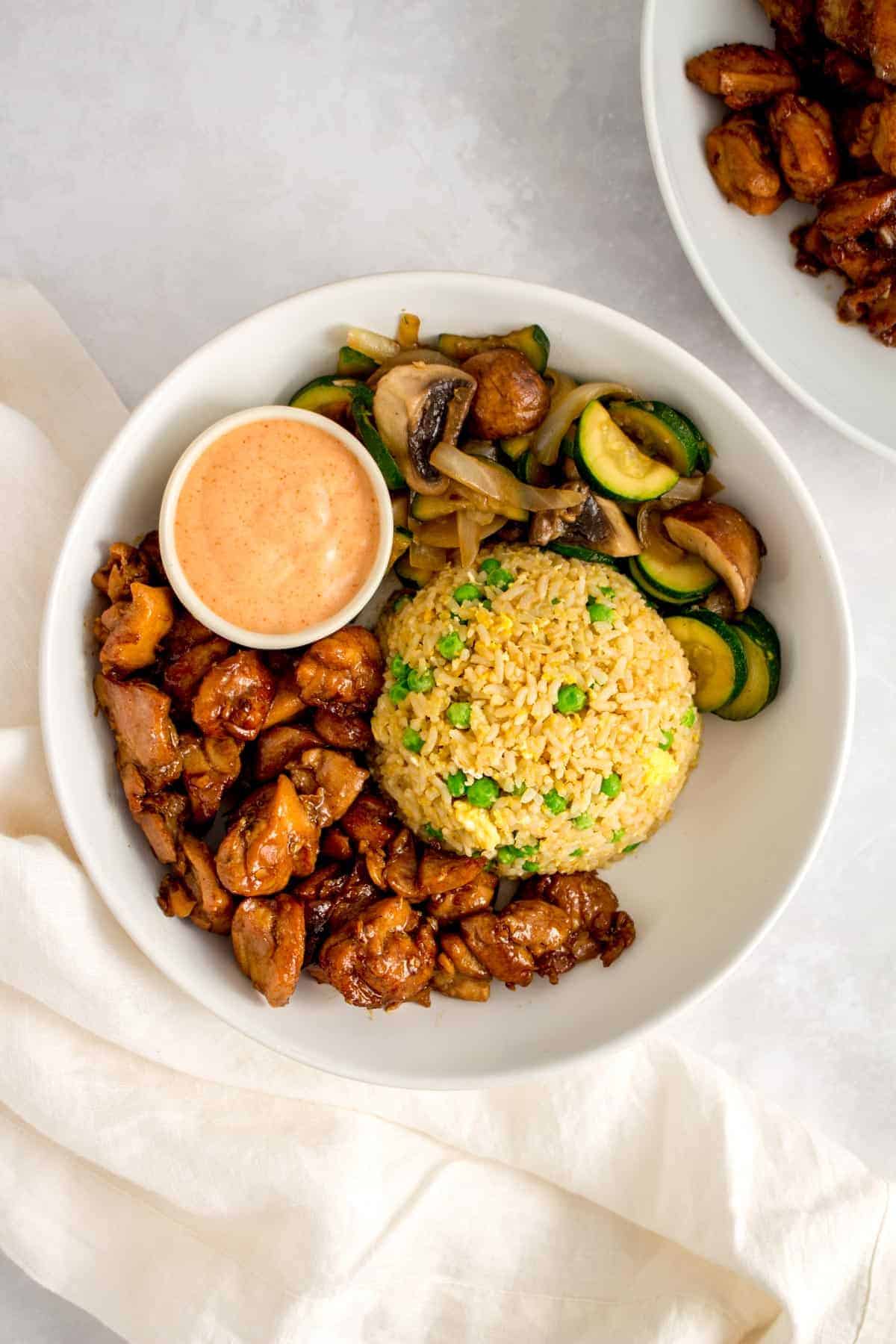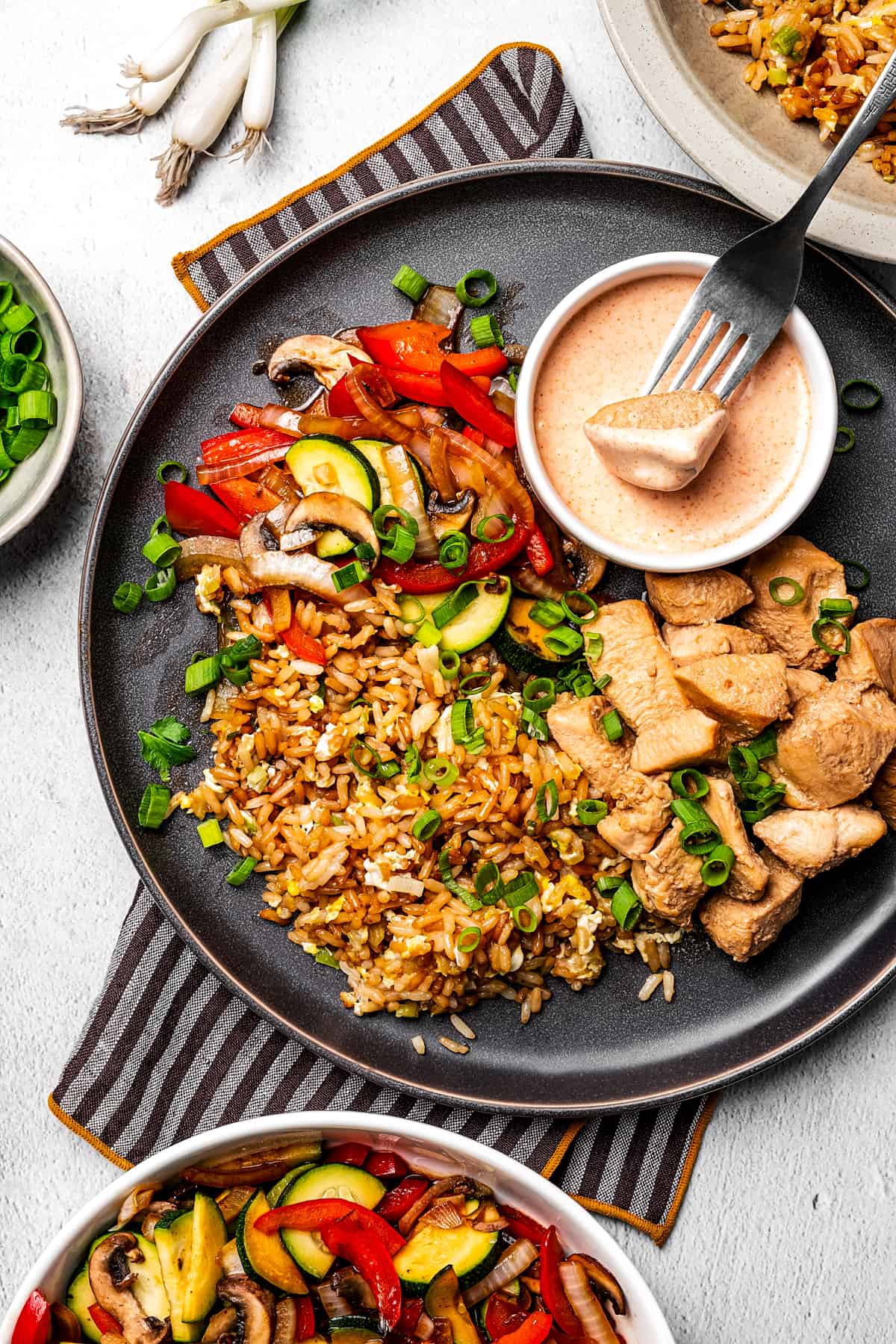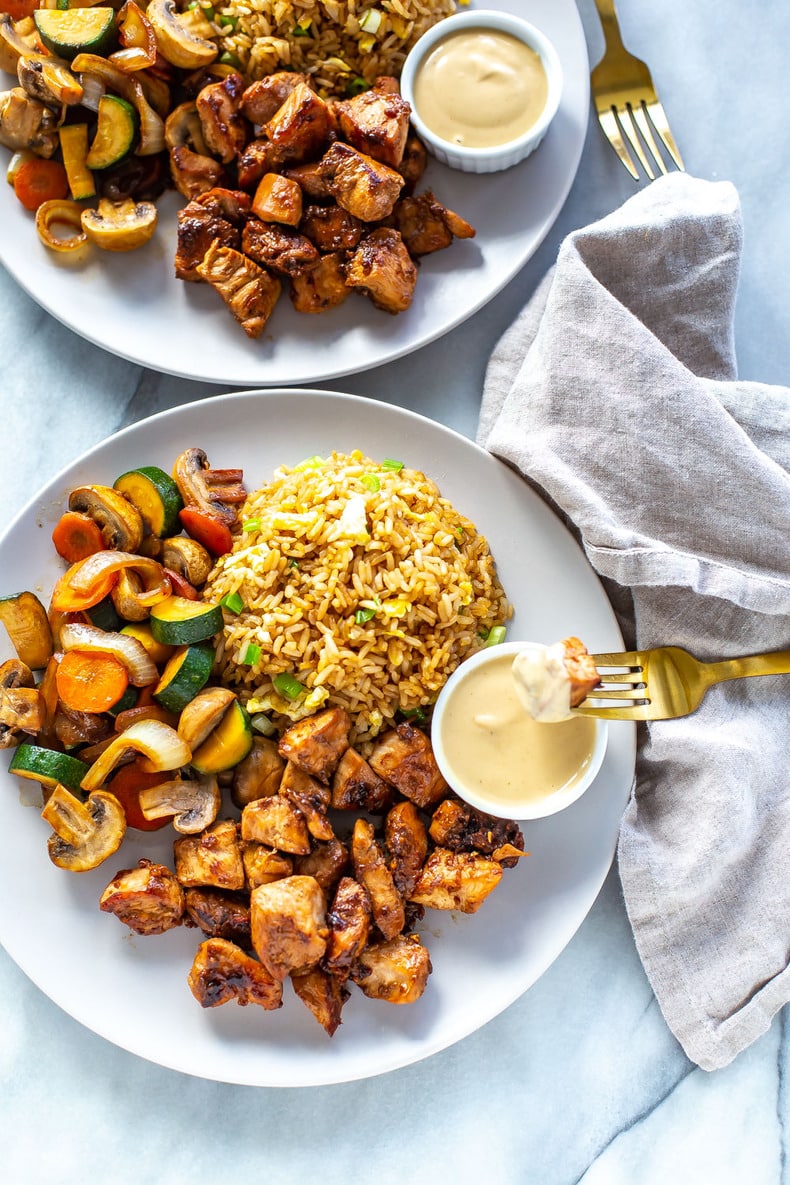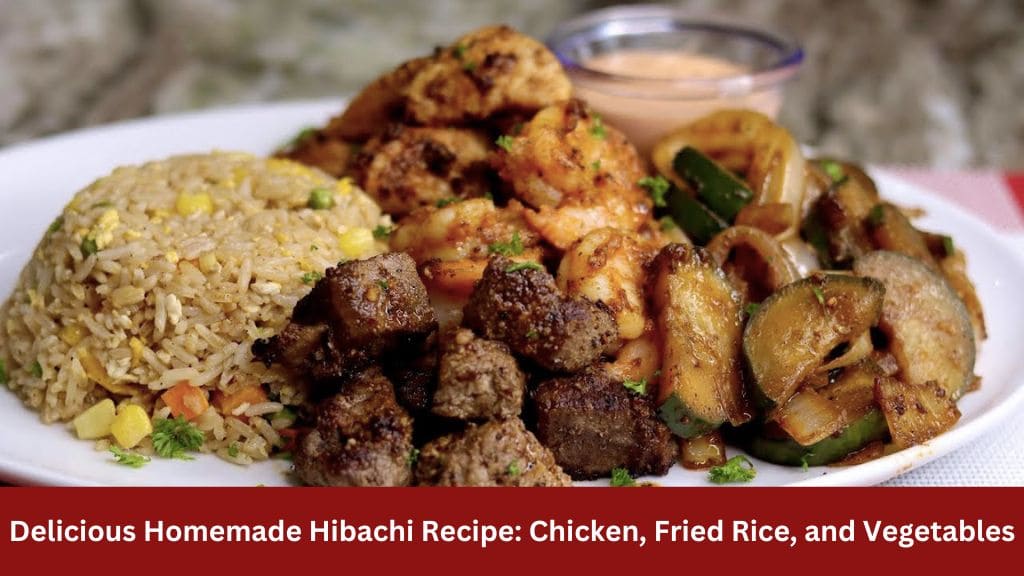Hibachi-style cooking, with its sizzling meats, vibrant vegetables, and savory sauces, is a culinary experience that brings joy and satisfaction to any meal. While dining at a hibachi restaurant offers a unique atmosphere with chefs performing impressive cooking techniques, you can recreate this delightful experience right in your kitchen. In this comprehensive guide, we will explore how to make homemade hibachi, covering everything from ingredients and preparation to cooking techniques and serving suggestions.

What is Hibachi?
Hibachi refers to a traditional Japanese heating device used for cooking. It has evolved into a style of cooking that is known for its open-grate design, allowing food to be grilled over high heat. In North America, “hibachi” often refers to the style of cooking performed on a large, flat iron griddle, where chefs cook in front of guests, creating a dynamic and entertaining dining experience. The hallmark of hibachi cooking is its simplicity, focusing on fresh ingredients and straightforward preparation.
Essential Ingredients for Homemade Hibachi

Protein Choices
- Chicken: Boneless, skinless chicken breasts or thighs are commonly used. They are diced into bite-sized pieces for quick cooking.
- Steak: Sirloin or ribeye steak cut into cubes is a popular choice for hibachi.
- Shrimp: Large shrimp, peeled and deveined, cook quickly and are perfect for hibachi.
- Tofu: For a vegetarian option, firm tofu can be used. Ensure it is well-pressed to remove excess moisture.
Vegetables
A variety of vegetables can be used in hibachi cooking, providing color, texture, and flavor to the dish. Common choices include:
- Carrots: Thinly sliced or julienned.
- Mushrooms: Sliced in half or quarters.
- Onions: Cut into large chunks.
- Zucchini: Chopped into bite-sized pieces.
- Bell Peppers: Sliced into strips.
- Broccoli: Cut into small florets.
Sauces
- Soy Sauce: A staple in hibachi cooking, used for seasoning the protein, vegetables, and rice.
- Hoisin Sauce: Adds a sweet and savory flavor to the protein.
- Garlic and Ginger: Freshly minced for authentic flavor.
- Mustard Sauce: A tangy dipping sauce made with light mayonnaise, soy sauce, rice vinegar, and Dijon mustard.
Rice
White Rice: Cooked and preferably chilled leftover rice works best for making fried rice. Jasmine or long-grain rice is ideal.
Necessary Equipment
To recreate the hibachi experience at home, you’ll need a few essential tools:
- Large Skillet or Griddle: A large, flat cooking surface allows you to cook multiple components simultaneously.
- Spatulas: For flipping and stirring the ingredients.
- Sharp Knife: For cutting the protein and vegetables.
- Rice Cooker: Optional, but helpful for making perfect rice.
- Mixing Bowls: For preparing sauces and marinating ingredients.
Step-by-Step Hibachi Chicken Recipe

Ingredients
Hibachi Chicken:
- 1 lb chicken breasts, diced
- 1 tbsp sesame oil (or neutral cooking oil)
- 2 tbsp soy sauce
- 2 tbsp hoisin sauce
- 4 cloves garlic, minced
- 1 tsp fresh minced ginger
Mustard Sauce:
- 1/2 cup light mayo
- 1 tbsp soy sauce
- 1 tbsp rice vinegar (or apple cider vinegar)
- 1 tbsp Dijon mustard
Sautéed Vegetables:
- 1 tbsp olive oil (or another neutral cooking oil)
- 1 carrot, thinly sliced
- 1 cup mushrooms, sliced in half
- 1 yellow onion, chopped
- 1 zucchini, chopped
- 1 tbsp soy sauce, plus salt & pepper to taste
Instructions
- Prepare the Chicken Marinade: In a small bowl, mix together sesame oil, soy sauce, hoisin sauce, minced garlic, and ginger. Pour this mixture over the diced chicken, ensuring all pieces are coated. Let it marinate for at least 15 minutes.
- Cook the Chicken: Heat a large skillet over medium-high heat. Add the marinated chicken and cook for about 10 minutes, stirring occasionally, until fully cooked through. Remove the chicken from the pan and set aside.
- Prepare the Mustard Sauce: While the chicken is cooking, mix light mayo, soy sauce, rice vinegar, and Dijon mustard in a small bowl. Set aside for serving.
- Sauté the Vegetables: In the same skillet, add olive oil and let it heat up. Add the sliced carrots, mushrooms, onions, and zucchini. Season with soy sauce, salt, and pepper. Sauté for about 5 minutes until the vegetables are tender-crisp. Remove from heat and set aside.
Making the Perfect Fried Rice

Ingredients
- 2 cups cooked white rice (preferably chilled)
- 2 tbsp butter (or butter substitute)
- 4 cloves garlic, minced
- 3 tbsp soy sauce
- 1 egg
- 4 green onions, sliced
Instructions
- Heat the Skillet: In the same skillet used for the chicken and vegetables, melt the butter over medium-high heat.
- Sauté Garlic: Add minced garlic and sauté for about 30 seconds until fragrant.
- Add the Rice: Add the cooked rice to the skillet, breaking up any clumps with a spatula. Stir in the soy sauce and cook for about 5 minutes until the rice is heated through.
- Scramble the Egg: Push the rice to one side of the skillet, creating a space in the center. Crack the egg into the space and scramble it until just set. Mix the scrambled egg into the rice.
- Add Green Onions: Stir in the sliced green onions and cook for another minute. Remove from heat and set aside.
Sautéed Vegetables
Ingredients
- 1 tbsp olive oil (or another neutral cooking oil)
- 1 carrot, thinly sliced
- 1 cup mushrooms, sliced in half
- 1 yellow onion, chopped
- 1 zucchini, chopped
- 1 tbsp soy sauce
- Salt & pepper to taste
Instructions
- Heat the Skillet: In a large skillet, heat the olive oil over medium-high heat.
- Add Vegetables: Add the sliced carrots, mushrooms, onions, and zucchini to the skillet.
- Season and Cook: Season with soy sauce, salt, and pepper. Sauté for about 5 minutes, stirring occasionally, until the vegetables are tender-crisp.
- Remove from Heat: Remove the vegetables from the skillet and set aside.
Mustard Sauce and Other Dipping Sauces

Mustard Sauce
Ingredients:
- 1/2 cup light mayo
- 1 tbsp soy sauce
- 1 tbsp rice vinegar (or apple cider vinegar)
- 1 tbsp Dijon mustard
Instructions:
- In a small bowl, mix together the light mayo, soy sauce, rice vinegar, and Dijon mustard until smooth.
- Serve alongside the hibachi chicken and vegetables.
Ginger Sauce
Ingredients:
- 1/4 cup soy sauce
- 1/4 cup rice vinegar
- 1 tbsp grated fresh ginger
- 1 clove garlic, minced
- 1 tsp sugar
Instructions:
- Combine all ingredients in a small bowl and mix well.
- Serve as a dipping sauce with the hibachi meal.
Yum Yum Sauce
Ingredients:
- 1/2 cup mayonnaise
- 1 tbsp tomato paste
- 1 tbsp melted butter
- 1 tsp garlic powder
- 1 tsp paprika
- 1 tsp sugar
- 1-2 tbsp water (to thin)
Instructions:
- Mix all ingredients in a bowl until smooth.
- Adjust the consistency with water if needed.
- Serve with hibachi chicken and vegetables.
Tips for a Successful Homemade Hibachi Experience

- Prep in Advance: Have all ingredients prepped and ready to go before you start cooking. Hibachi cooking is fast-paced, and having everything ready will make the process smoother.
- High Heat: Use medium-high to high heat to achieve the characteristic sear on the meat and vegetables. This helps to lock in flavors and create a delicious caramelization.
- Don’t Overcrowd the Pan: Cooking in batches if necessary to avoid overcrowding the pan. This ensures even cooking and prevents steaming instead of searing.
- Use Leftover Rice: For the best fried rice, use rice that has been cooked and chilled. Freshly cooked rice can be too moist and clump together.
- Experiment with Flavors: Feel free to adjust the sauces and seasonings to your taste. Hibachi cooking is versatile, and you can customize it to suit your preferences.
Serving Suggestions
Serve your homemade hibachi chicken, vegetables, and fried rice together on a large platter or individual plates. Here are some ideas to enhance your meal:
- Garnish with Sesame Seeds: Sprinkle toasted sesame seeds over the chicken and vegetables for added flavor and texture.
- Add a Side Salad: A simple green salad with a light vinaigrette can complement the rich flavors of the hibachi meal.
- Serve with Pickled Ginger: Similar to sushi, pickled ginger can provide a refreshing contrast to the savory hibachi dishes.
- Include Sake or Green Tea: Pair your meal with a traditional Japanese beverage like sake or green tea for an authentic touch.
Storing and Reheating Leftovers
Storing
- Refrigerator: Store any leftovers in airtight containers in the refrigerator for up to 5 days.
- Freezer: You can also freeze the cooked hibachi chicken and fried rice separately for up to 3 months. Use airtight glass containers or Ziploc bags.
Reheating
- Stovetop: For the best texture, reheat leftovers in a pan on the stovetop. This helps to crisp up the vegetables and chicken again.
- Microwave: If using a microwave, add a splash of water to the chicken to prevent it from drying out. Heat in short intervals, stirring in between.
- Defrosting: If frozen, let the food defrost in the refrigerator overnight before reheating.
Conclusion
Making homemade hibachi is a fun and rewarding way to enjoy the flavors of Japanese cuisine in the comfort of your own home. With a few essential ingredients and some simple cooking techniques, you can create a delicious and memorable meal that rivals any restaurant experience. Whether you’re cooking for a family dinner or entertaining guests, homemade hibachi is sure to impress. Enjoy the process, experiment with flavors, and most importantly, savor every bite of your homemade hibachi creations.





